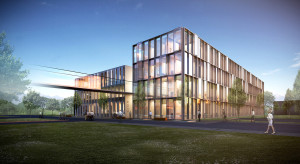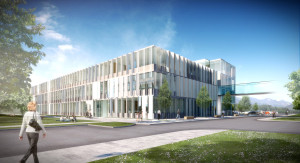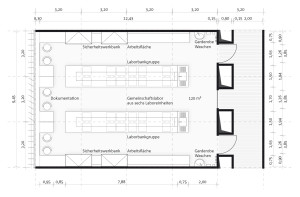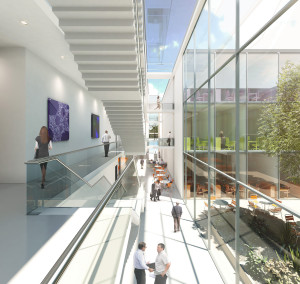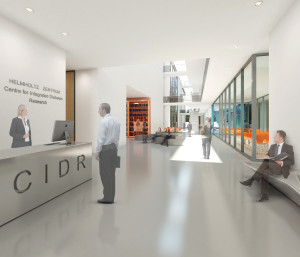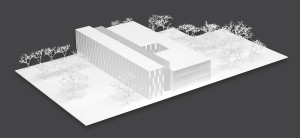New Laboratory Building
Construction Laboratory Building
Position | Phase BIM Manager | LPH 1 – 9
Service Period | Costs Since 2013 | 26.6 Mio. €
Architectural Firm Stuttgarter Service- und Planungsgesellschaft mbH | Stuttgart | Germany
The site for the new building of the Helmholtz Diabetes Center (HDC) is located on the east perimeter of the existing research campus on Heilmeyer road. The new building is centrally located on the property providing short links to the surrounding buildings while having direct access from Heilmeyer road. A bridge connects the 1st Floor of the HDC to the German Mouse Clinic, which will provide access regardless of weather conditions. Due to economical and sustainable design influence the new building is designed to be expandable if needed. An option would be to place two additional structures to the north to continue the urban structure which will be directly connected to the HDC. Another option would be, adding an additional level on top of the new laboratory building to allow the continuing of the developed laboratory structure beneath.
The basic idea of the architectural design for the Helmholtz Diabetes Center is an ideal arrangement of functions with an efficient use of space and its implementation in an ambitious and dynamic architectural language. In order to meet these goals within the design phase of the new building, it is important to use a technology that allows a constant stream of information to control the relationship between the building envelope, volume and its estimated floor space. By using BIM technology, a virtual information model has been developed at an early stage to create a digital representation of the physical and functional characteristics of the new laboratory building.
The project has been planned with Autodesk Revit Architecture thus far. This software solution allows the documentation and evaluation of areas during the preliminary design phase (LPH 2) which are directly linked to the entire volume of the new building. Mass models have been developed and could be evaluated by an extended parametric design. Based on these results, the architects and designers have finally been able to develop a layout scheme that meets the needs and expectations of the client, providing an efficiency which is usually based on the ratio between the estimated floor area and the gross floor area.
During the ongoing planning process, the virtual information model – also known as a BIM model – has been refined and additional details have been added, leading to a higher model complexity. Therefore, linked models have been introduced to be able to divide the model into different linked models, such as architectural, structural and MEP models as well as others. In order to be able to manage an interdisciplinary BIM model, a BIM execution plan as part of an organized BIM management has to be defined. This document has been put in place between all project members at the beginning of the design phase while the responsibility for the organized BIM management has been taken by the architect. The previously developed architectural BIM model has now been placed on a BIM server to allow full access to all project members for further development.
During the design phase (LPH 3), the structural and MEP BIM’s are now going to be developed and integrated into the overall collaborated BIM. While using a BIM server, allowing all project members to access and use this server, all information and data are available promptly. Furthermore, the BIM is used to carry out clash detection, linked cost analysis and quantity takeoffs – saving time and leading to a higher design quality.

